Astana, being the capital of Kazakhstan, is home to a surprisingly few number of museums. There are certainly a few good ones, but the numbers are certainly not on Astana’s side, especially if you are interested in museums with a more historical focus. I am more in favour of the museum scene in Almaty, and even some regional examples (like the KarLag Museum in Dolinka, or the Historical and Regional Studies Museum of Pavlodar Province in, well, Pavlodar) provide a more interesting experience (for me that is) than even some of the bigger ones that one can find in the capital. In any case, here are my three favourite museums in Astana, admittedly, all for a very different reason.
National Museum of Kazakhstan
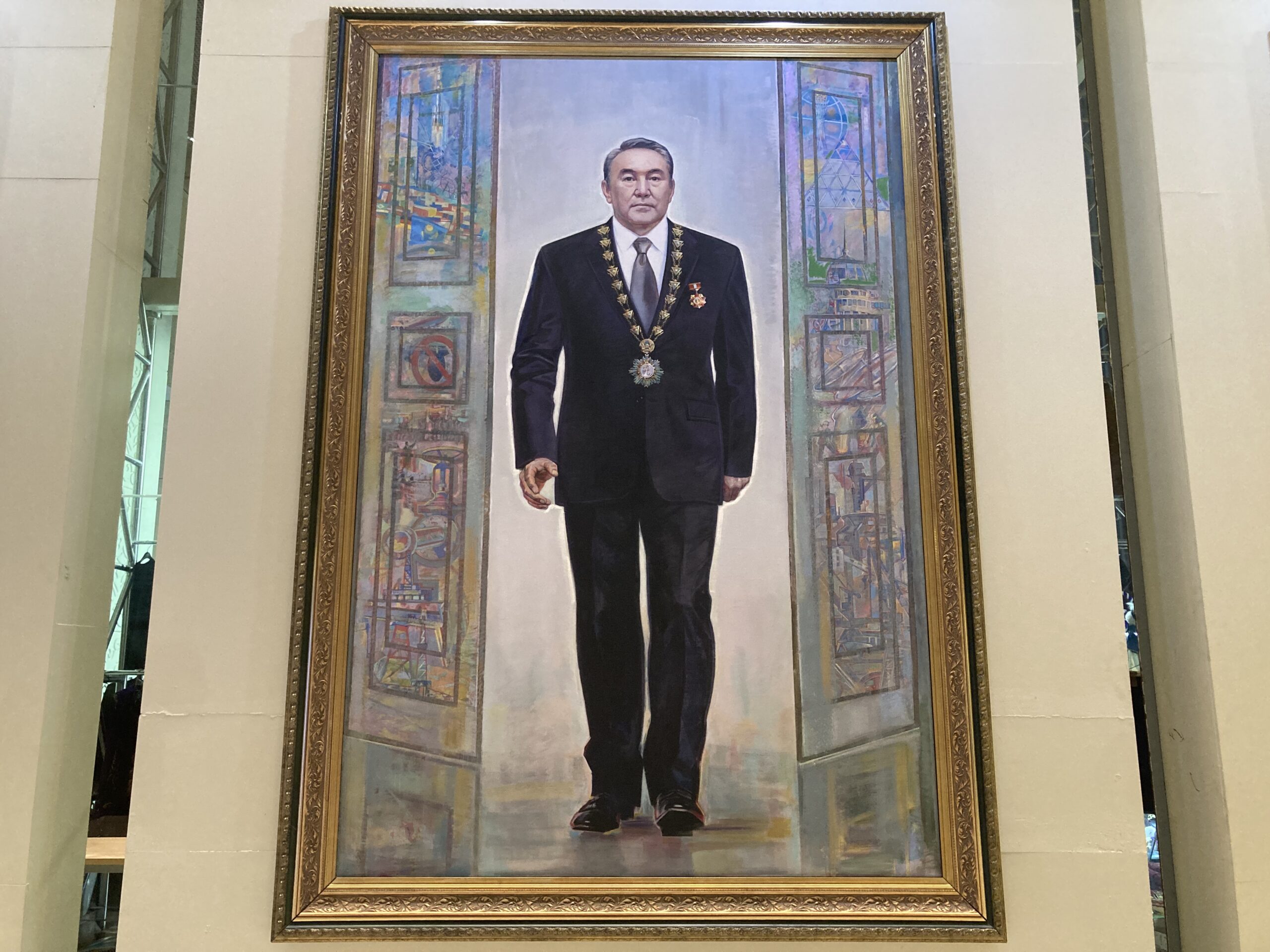
By its sheer size, this is likely the biggest museum in the country. However, compared to Almaty’s Central State Museum it is lacking, something… To be more specific, it is lacking a few crucial things that make a museum a good one. First of all, it does not have easily navigable halls, a must have for any museum in my mind. In fact you can easily miss out on parts of the exhibition if you are not thorough in your exploration. Furthermore, Nursultan Nazarbayev’s presence is almost a bit too overbearing. You can find his portraits and some personal belongings scattered all around which is why a visit to this place is a must to understand the recent history of Kazakhstan, but recurring visits likely would not be of interest for most people.
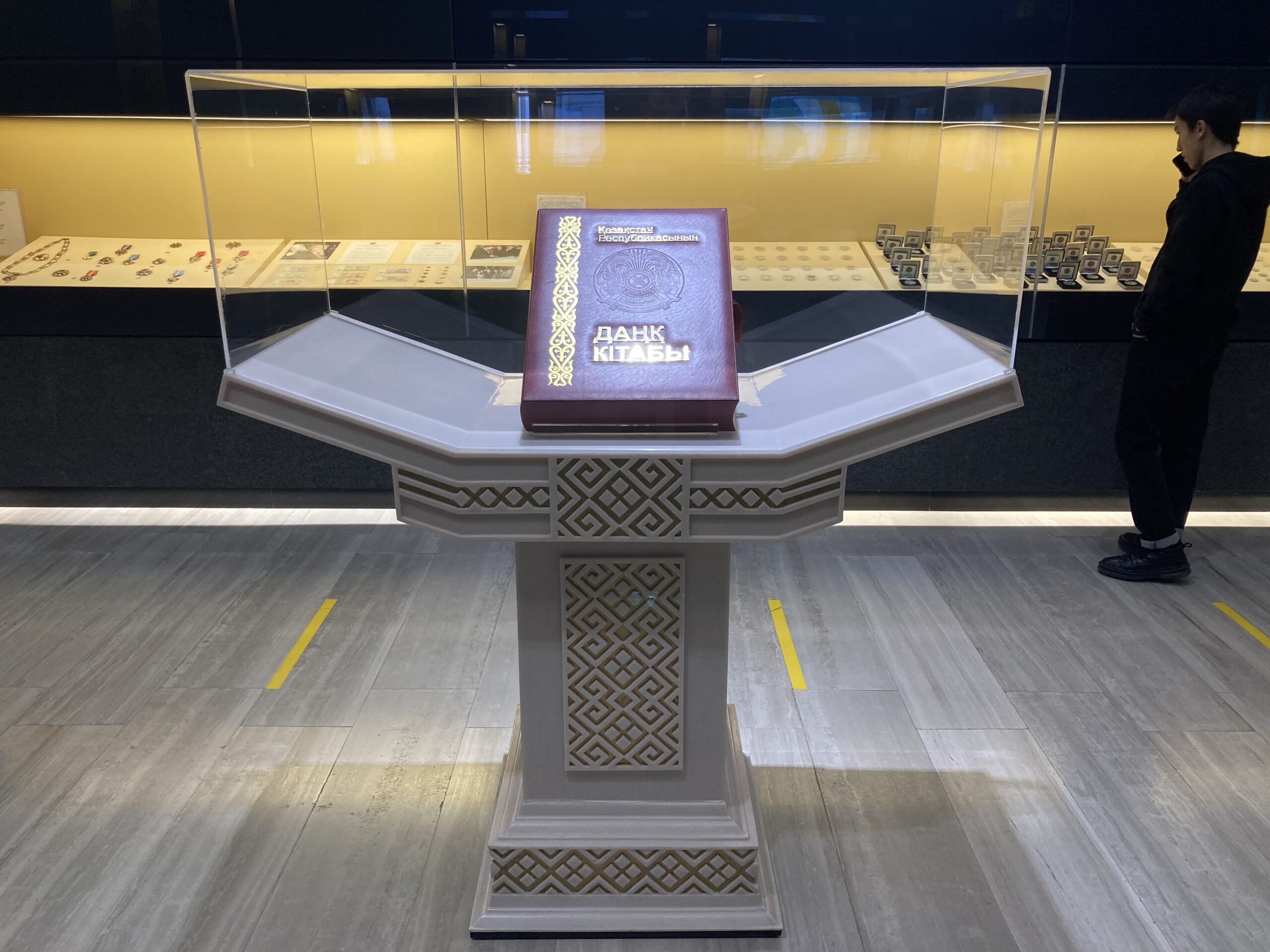
Of course, it is not just some portraits that make me think that the museum is mostly dedicated to the first president of the country. Around a half of its space is dedicated to modern Kazakh history, and by that, I mean the last 30 or so years of independence. This inevitably means that the majority of the material found in this museums’ halls are dedicated to Nazarbayev and his relatives. It is also a bit off to see that those parts are the ones that most severely lack English translations, hindering my ability to truly appreciate what was exhibited in front of me. At times, even Russian descriptions seemed to be lacking. This book is an excellent example of this. It appears to be a book for awards of sorts, which is what I could gather after the help of my local friends days after my visit to the museum. However, there were not descriptions for it anywhere around it. I suppose the audioguide would be useful here, but I despise listening to those things. Reading always triumphs over listening.
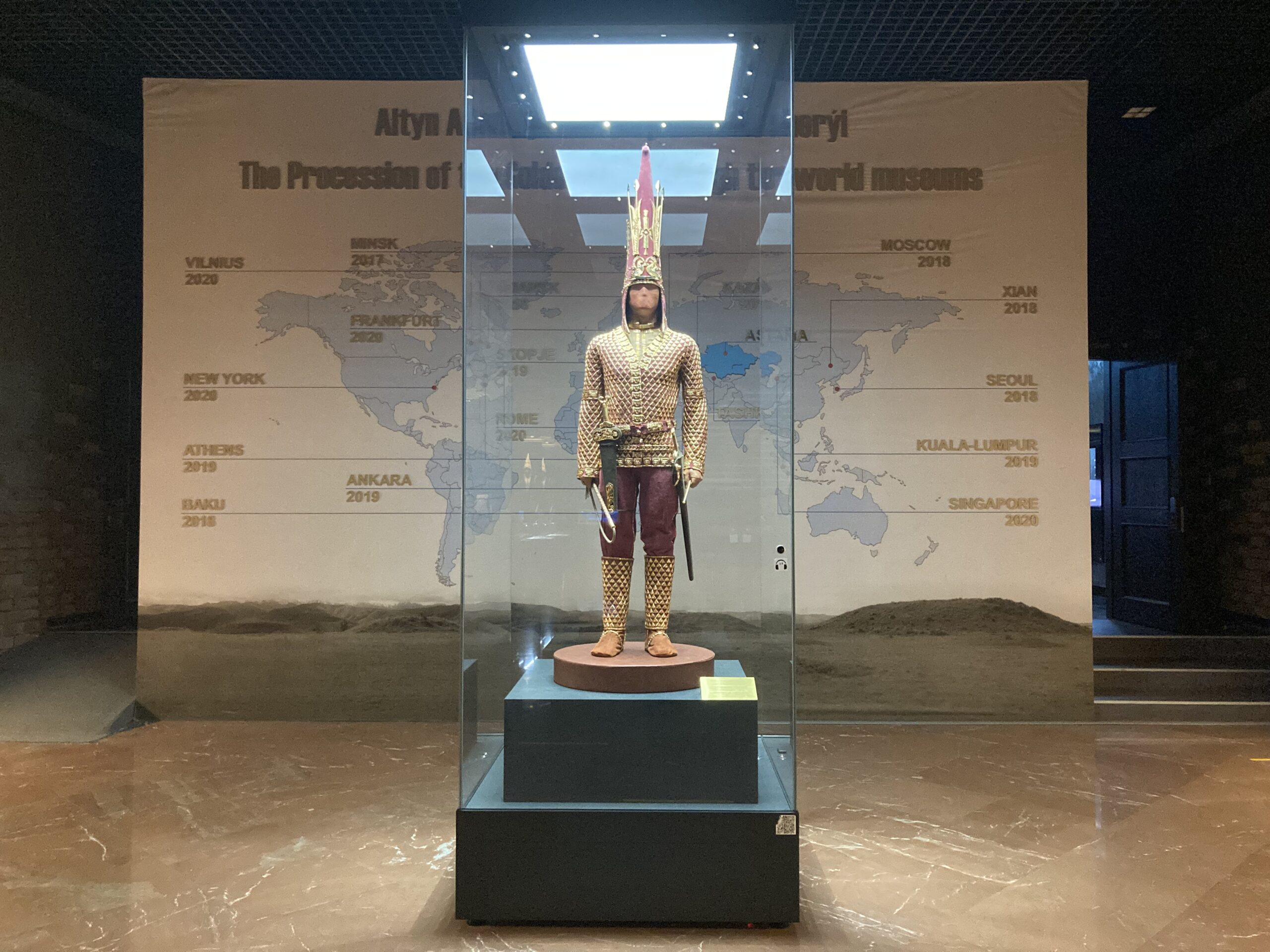
Yet another one of the shortcomings of this museum is its apparent lack of transparency. Most of the exhibits seem to be imitations, and this is not noted clearly in all cases. It is very surprising to see that even the legendary Golden Man of Issyk turned out to be an imitation when I was visiting the museum. You have to pay extra to see this hall, but that extra buys access to a “possibility” of seeing the real deal at best. I am not entirely sure where the real Golden Man is right now, but it appears to be either touring around or is perhaps hidden from the public eye for research purposes. Regardless of the reasoning behind it, it is just never fun to be excited about something, only to find out that the said thing is not even there.
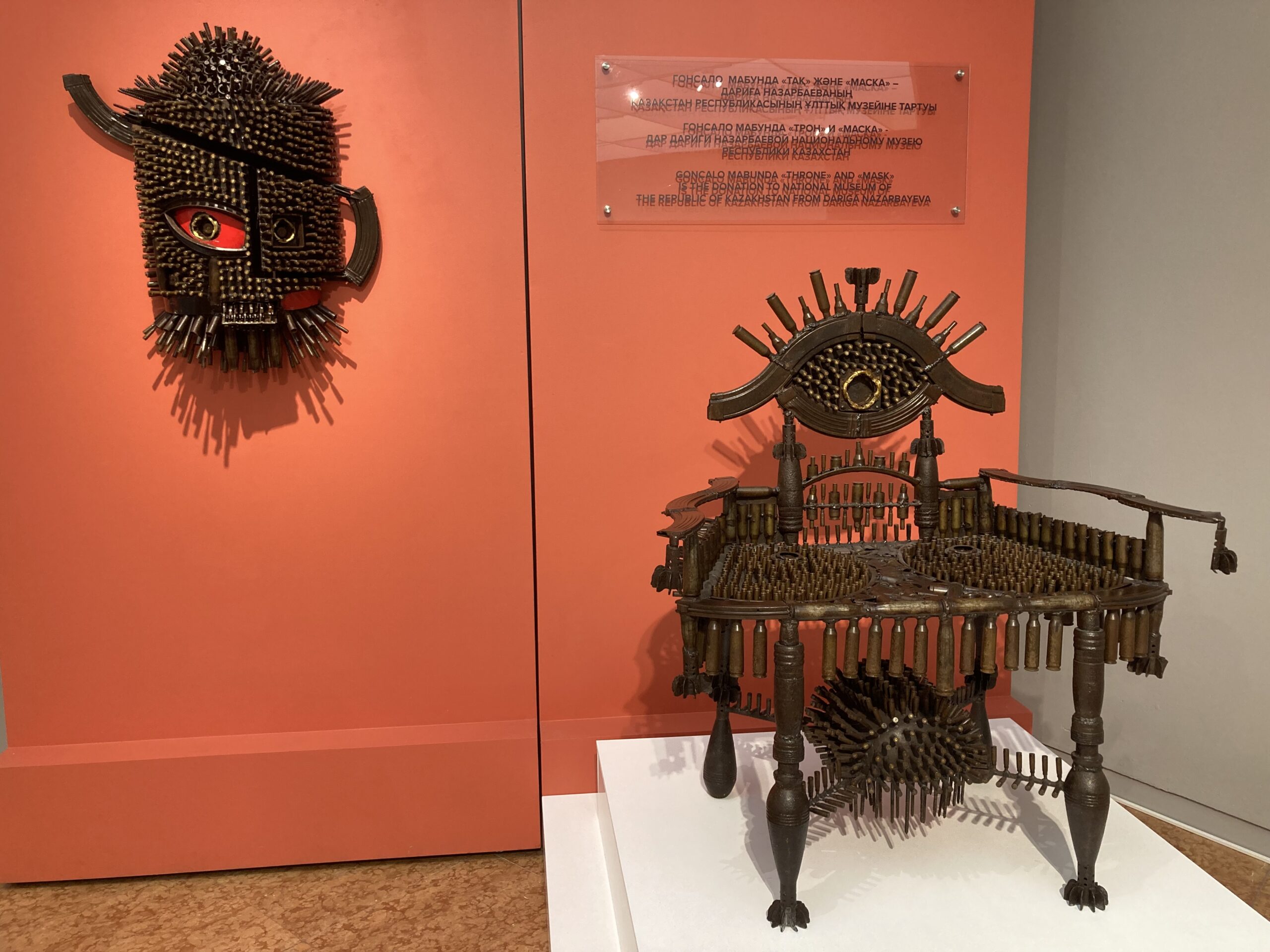
Well, admittedly, the National Museum of Kazakhstan in Astana does have its merits as well. One of the finest things to note about it is its third floor with two small halls dedicated to modern art. The two intriguing creations on this photo, made of shell casings and husks of rockets were apparently a gift from Nazarbayev’s daughter, which just goes ahead to prove my first point about this whole enterprise. This is not a criticism per se, but it is something to keep in mind.
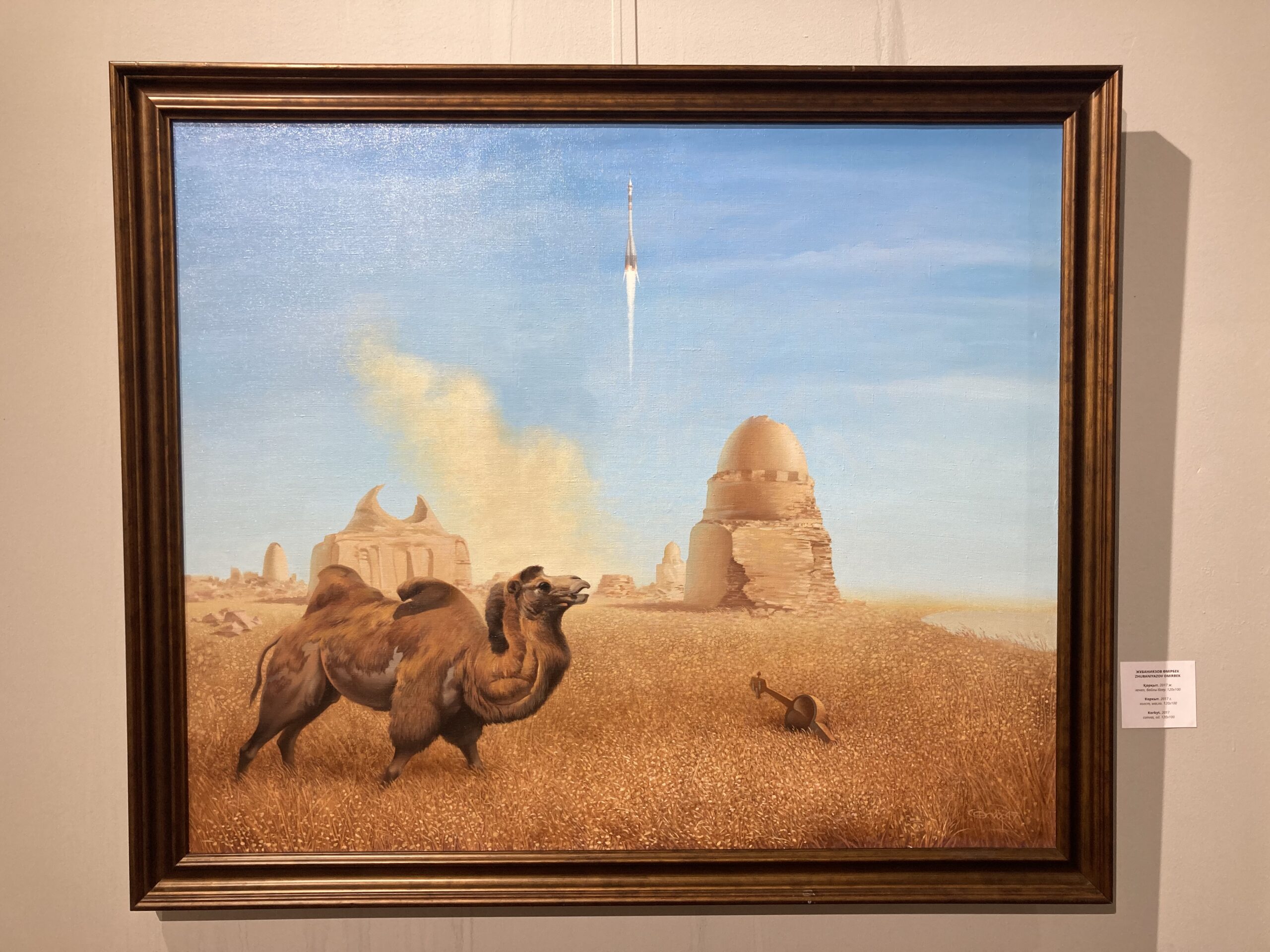
My favourite piece in all of this museum must be this one though, not because of its artist (that I could not even find out anything about online after my trilingual search) nor its style about which I would not know anything about given how uneducated I am about fine arts. It managed to get under my skin by its sobering illustration of what some of the first observers of space launches from Baikonur may have seen at the time. These stark contrasts in the composition with a camel (apparently in shock) looking at a Soviet Soyuz rocket amidst some ancient ruins is quite mind-boggling.
Nur Alem Future Energy Museum
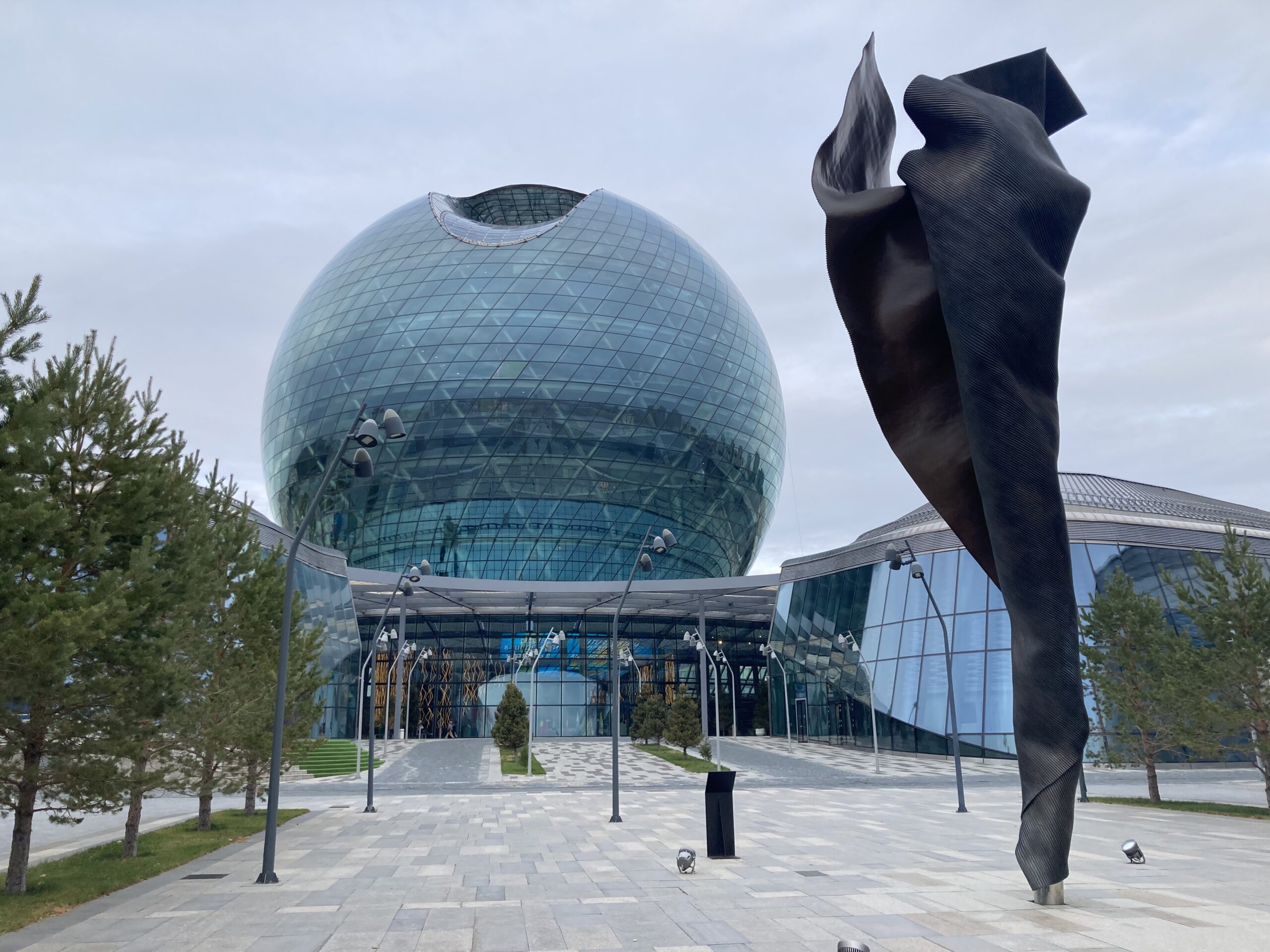
If you ever bother to check any photographs of Astana online, you are bound to come across to something that looks similar to this one. Astana EXPO in 2017 gave birth to many futuristic looking buildings like this interesting sphere, which I affectionately call “the Orb.” Well, the Orb is not just some cool spherical structure, it serves a few purposes, most important of which (for me) is that it holds the Nur Alem Future Energy Museum. This complex takes up seven floors inside the Orb. Each floor explores a different way of producing energy. Exhibitions on water and wind energy are especially interesting as they have a lot of interactive parts for people of all ages to enjoy, though admittedly they may be geared a bit towards children.
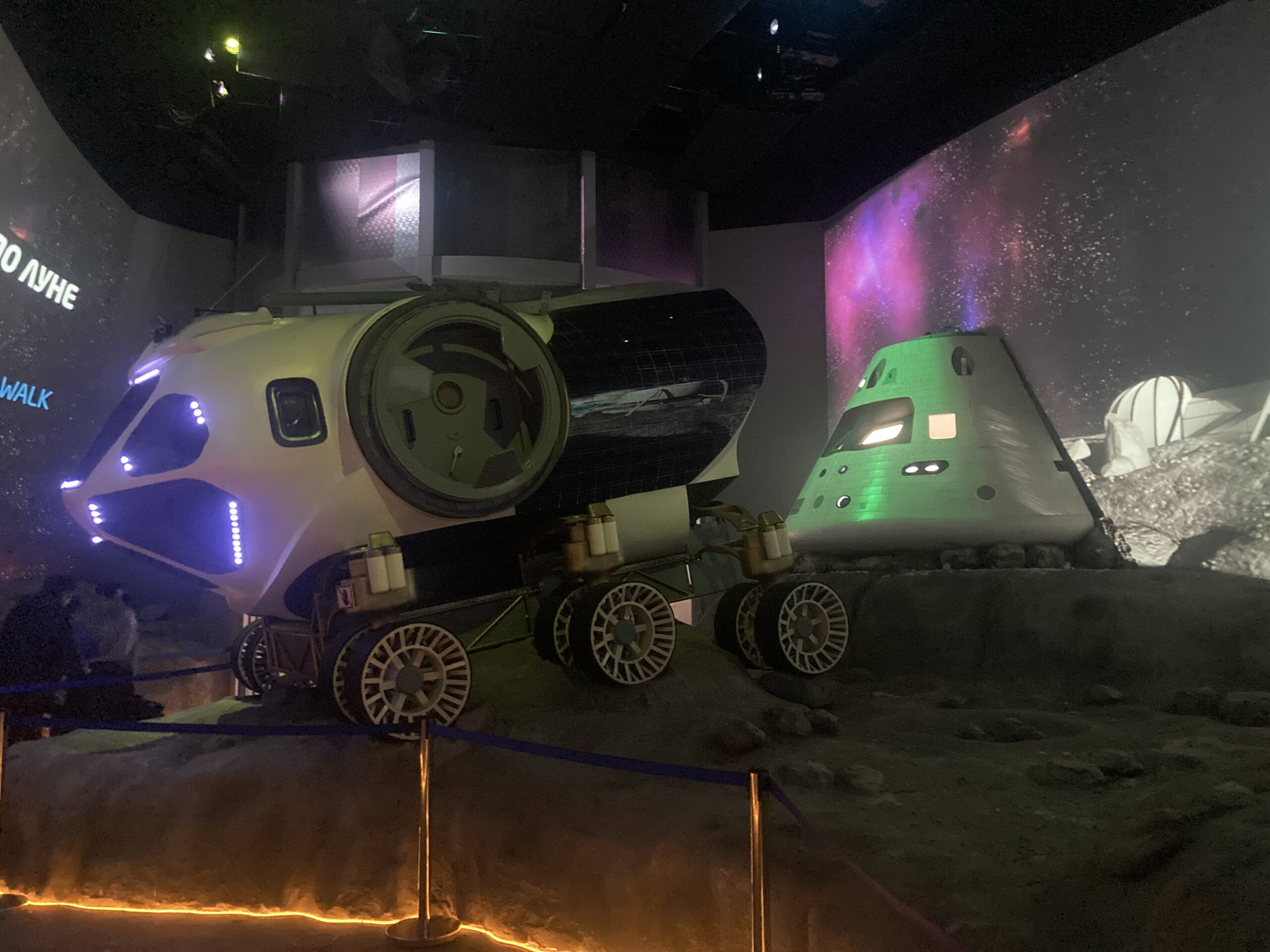
What I love the most about this museum is its last floor, which is dedicated to space exploration. It has a lot of original items that astronauts and cosmonauts from around the world used up in space, and it has displays like this one where you can see an imagined lunar base, complete with a landing capsule and a rover. The whole layout is very well thought out, everything is translated to English, and even the background music changes to fit the theme of the hall you are in. All of this and more is reason enough to visit this fantastic museum.
Atameken Ethno-Memorial Map of Kazakhstan
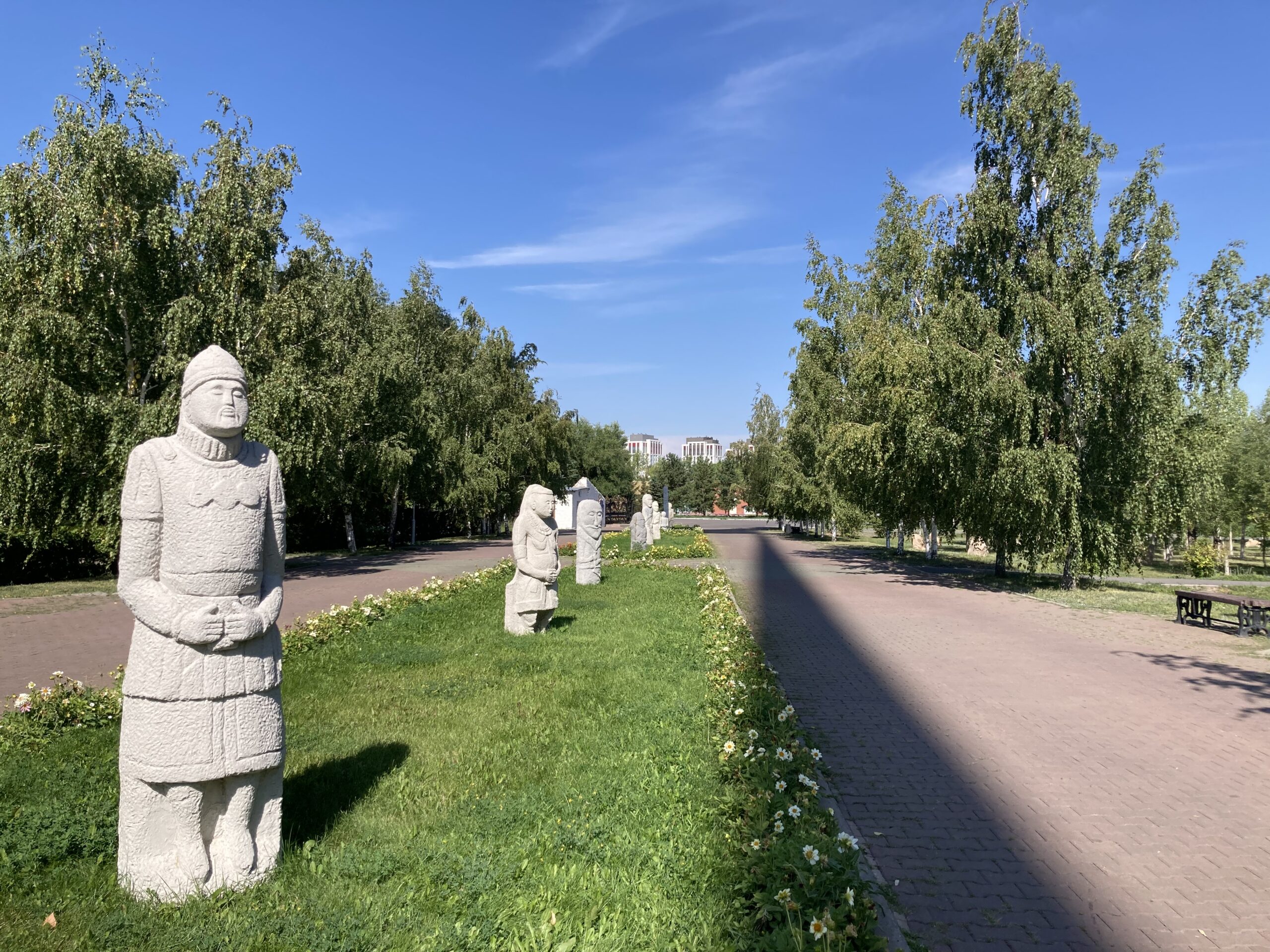
Even the entrance of Atameken is a much welcome sight. These cute balbals greet you as you come close to the kiosk selling entry tickets and the dreaded audioguides. They do not even compare to what is to come but even then, you know that you are on your way to a rather beautiful cultural landmark as you walk down this path.
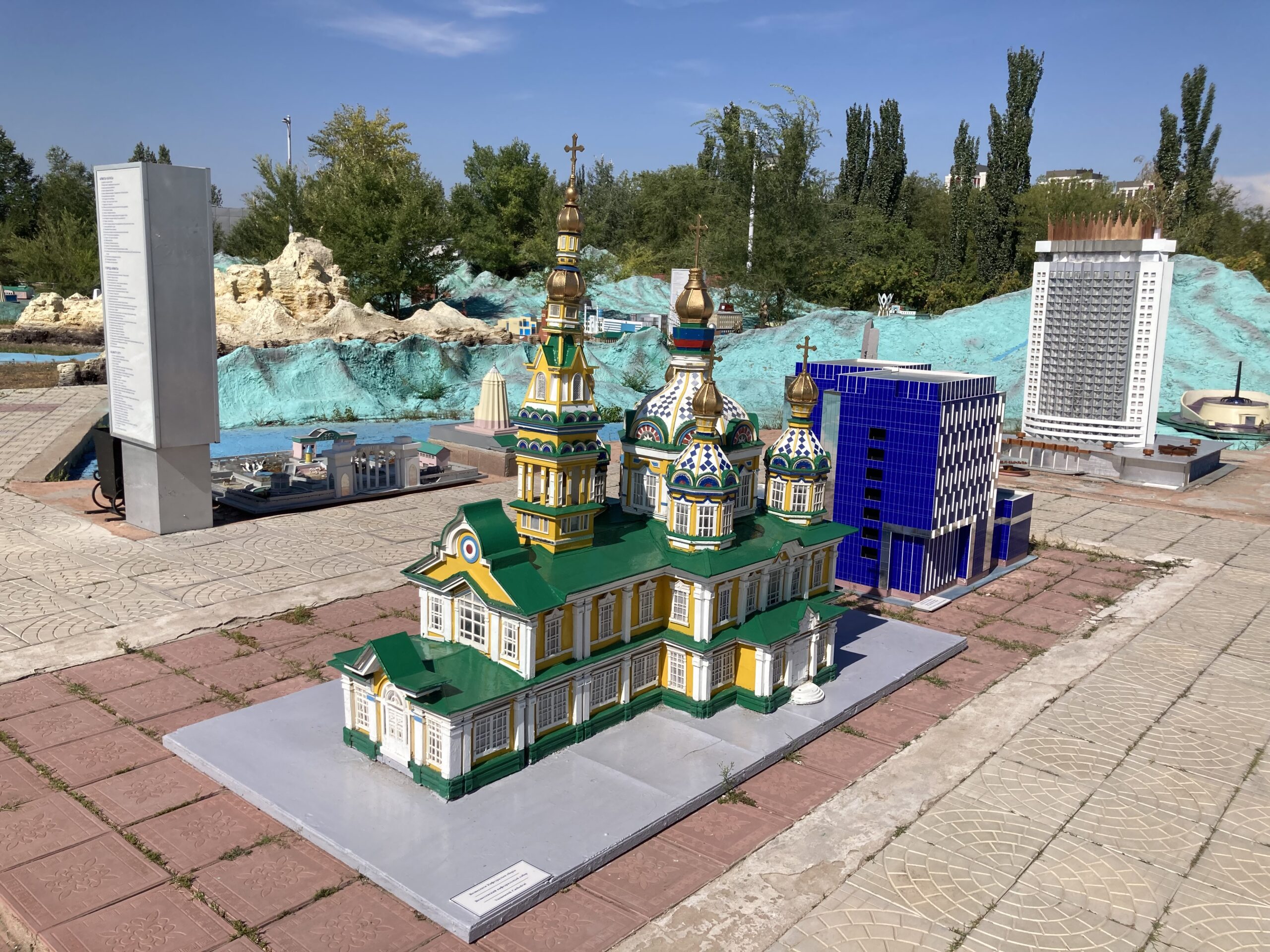
What Atameken is can easily be figured out by reading its full official name, “Atameken Ethno-Memorial Map of Kazakhstan.” It is a region-by-region reproduction of some of the finest landmarks Kazakhstan has to offer, and therefore, in my humble opinion, it is the first place any enterprising traveller in Kazakhstan need to visit. Sure, it spoils some of the highlights of your future trips around this vast country, but it also makes it much easier to plan said trips! I for one noted down pretty much anything interesting in Almaty region that I noticed here and visited them all when I actually went there. That covered for almost 90% of my trip planning to Almaty and the rest was hunting for Soviet mosaics, something that is always a separate quest as is.
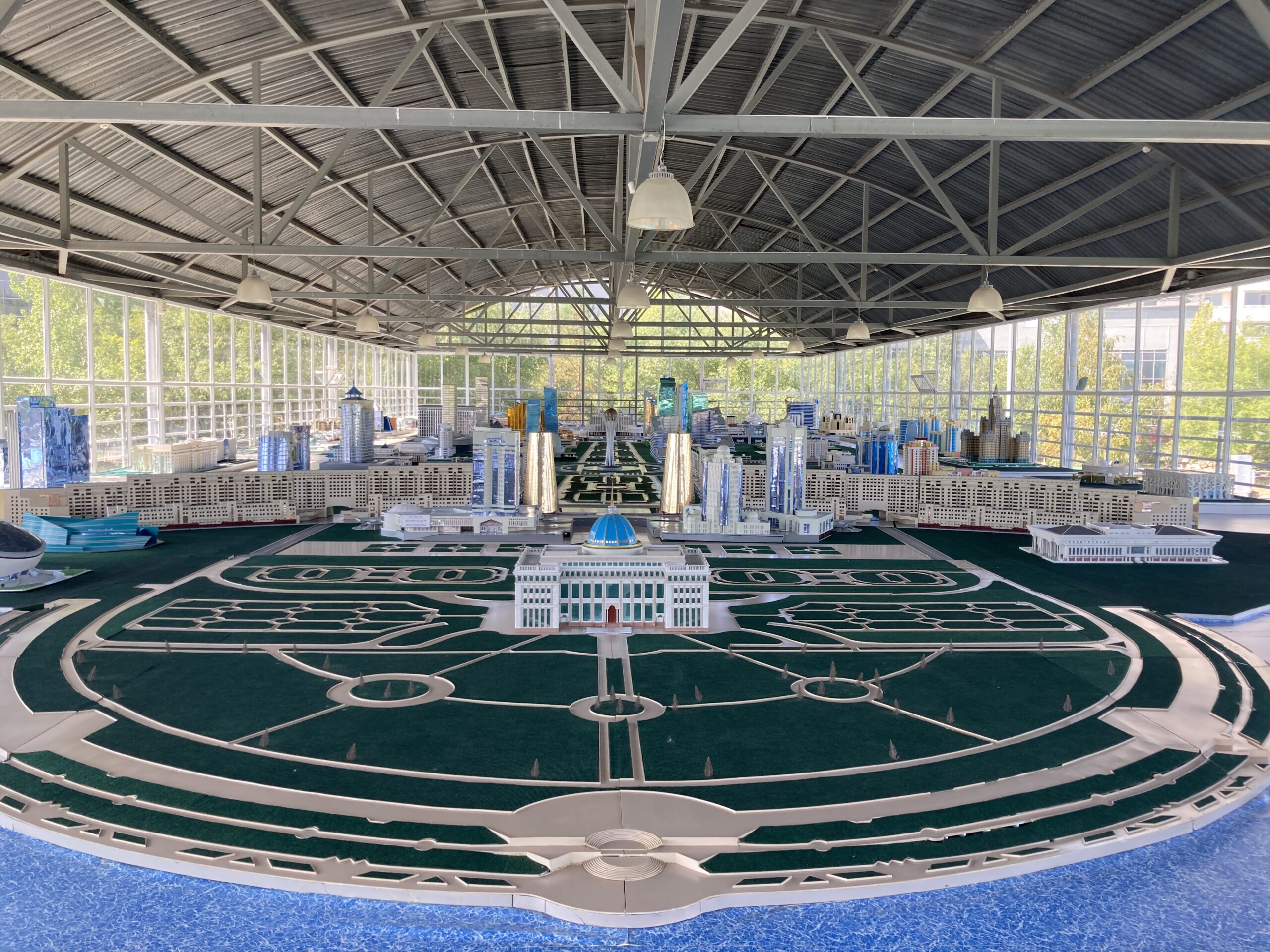
This whole place reminded me of the Miniaturk in Istanbul, a very similar museum-complex where you can see landmarks from all around Turkey in one concentrated spot. By the way, if you are not the travelling type but want to find out more about the city you live in, then you are also in the right spot. Inside a metallic building, you can find a replica of Astana’s carefully planned city center, and it is simply amazing for people like me who spent their entire childhood playing with Lego sets and tiny soldiers on imagined cities made out of sticks and bricks. If only I had this room to play in as a kid… In any case, I would suggest Atameken to all as well.
